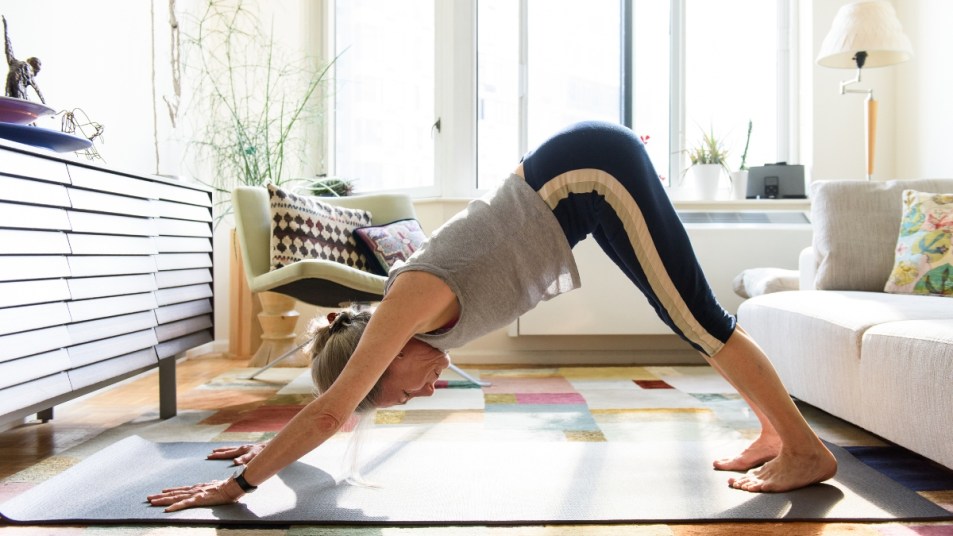This 5-Minute Posture Tweak Can Improve Your Mental Health and Reduce Stress

Remember being told to stand up straight when you were a kid? I heard that piece of advice a lot in my youth, but it never seemed to stick for long. Good posture is easy to forget, and never seemed particularly important anyway. As a result, I often find myself in a perpetual slouch. However, research shows that posture and mental health are closely linked — news that made me sit up a little straighter when I heard it!
In a study published in Health Psychology, researchers from the Department of Psychological Medicine at the University of Auckland theorized that slumped posture negatively affects mood and self-esteem. So, they decided to test their hypothesis on 74 volunteers.
The Benefits of Good Posture, According to Research
During the experiment, researchers randomly assigned 74 subjects to sit with either a slumped or upright posture. To reduce participants’ worries or expectations, they were told a cover story about the experiment — so they didn’t know the true purpose of the investigation.
To maintain good or bad posture throughout the course of the experiment, the researchers taped the participants’ backs with physiotherapy tape. Physiotherapy tape – also known as kinesiology tape – is a strong, breathable, and stretchy product that helps stabilize an area of the body.
Once taped in a set posture, participants completed a reading task and the Trier Social Stress Test (TSST). The TSST required them to give a speech in which they responded to a challenging mathematical problem in front of an audience. (Enough to stress anyone out!) In addition, the researchers assessed the participants’ mood, self-esteem, and perceived threat, and continuously measured their blood pressure and heart rate.
After collecting the data, the team found that participants with good posture reported higher self-esteem, better attention, and better moods during the experiment, in contrast with the bad posture group. Those with good posture also reported less fear during the TSST.
The researchers also conducted a linguistic analysis of the speeches. The analysis revealed that the slumped participants tended to give shorter speeches and used more words linked to sadness and negative emotions. They also used more first-person singular pronouns (I, me, myself), possibly suggesting that they had a harder time connecting to the audience.
Thus, the researchers concluded that an upright posture in the face of stress can help you maintain self-esteem and diminish a negative mood. It can also reduce your focus on yourself and increase your rate of speech. These positive traits suggest that good posture instills confidence and helps you think more about the conversation at hand.
How to Change Your Posture for Good
The benefits of good posture are too important to ignore. But how do you make a permanent change when it’s so easy to slip up? Research suggests that the best way to improve your posture is to practice daily stretches and exercises. Strengthening your muscles and easing tension in your shoulders and back will give you long-lasting results. That’s especially true if you are consistent in your practice.
Don’t have much time? Your routine could be as quick as five minutes, rotating between three different stretches and strengthening movements. Here are some movements we love:
- The wall angel, which is performed upright against a wall.
- Child’s pose, which releases the hips and low back.
- Bridge pose, which promotes better breathing and strengthens the lower back.
- Forward fold, to release tension in the back and improve flexibility in the posterior chain.
- Downward facing dog, to strengthen your core and stretch your shoulders, back, hamstrings, and calves.
- Cat and cow pose, to strengthen and stretch the muscles along your spine.
Dedicating just five minutes a day to improving your posture is a fun and manageable New Year’s resolution. Plus, it’s a great way to restore your confidence as you work towards other goals this year. Which stretches are you excited to try? I can’t wait to test out the wall angel!
















